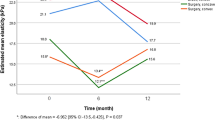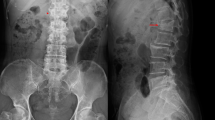Abstract
A survey of the usage of the Scott-Craig Orthosis among individuals with Li or above complete motor and sensory paraplegia is reported. Patients were grouped according to those without volitionally controlled abdominal musculature (C8-T5), those with volitionally controlled upper abdominal musculature (T6-T9), and those with all abdominal musculature under volitional control (T10-L1). The study was done in two phases. Phase I, done in 1976, consisted of a survey of 184 patients in this neurological grouping who received the Scott-Craig Orthosis at Craig Hospital from 1 January 1964 through to 31 December 1975. Phase II was completed in December 1980. Sixty-three additional patients were surveyed who were braced from 1 January 1976 through to 31 December 1979. Long-term usage and some form of ambulation was found in 77 per cent of those surveyed.
Similar content being viewed by others
Log in or create a free account to read this content
Gain free access to this article, as well as selected content from this journal and more on nature.com
or
References
Coghlan, J K, Robinson, C E, Newmarch, B & Jackson, B (1980). Lower extremity bracing in paraplegia—a follow-up study. Paraplegia, 18, 25–32.
Hahn, H R (1970). Lower extremity bracing in paraplegics with usage follow-up. Paraplegia, 8, 147–153.
Rosman, N, Spira, E (1974). Paraplegic use of walking braces: a survey. Arch. Phys. Med. Rehabil. 55, 310–314.
Stauffer, E S, Hoffer, M M & Nickel, V L (1978). Ambulation in thoracic paraplegia. J. Bone Joint Surg. (AM), 60-A, 823–824.
Author information
Authors and Affiliations
Rights and permissions
About this article
Cite this article
O'Daniel, W., Hahn, H. Follow-up usage of the Scott-Craig Orthosis in paraplegia. Spinal Cord 19, 373–378 (1981). https://doi.org/10.1038/sc.1981.70
Issue date:
DOI: https://doi.org/10.1038/sc.1981.70



